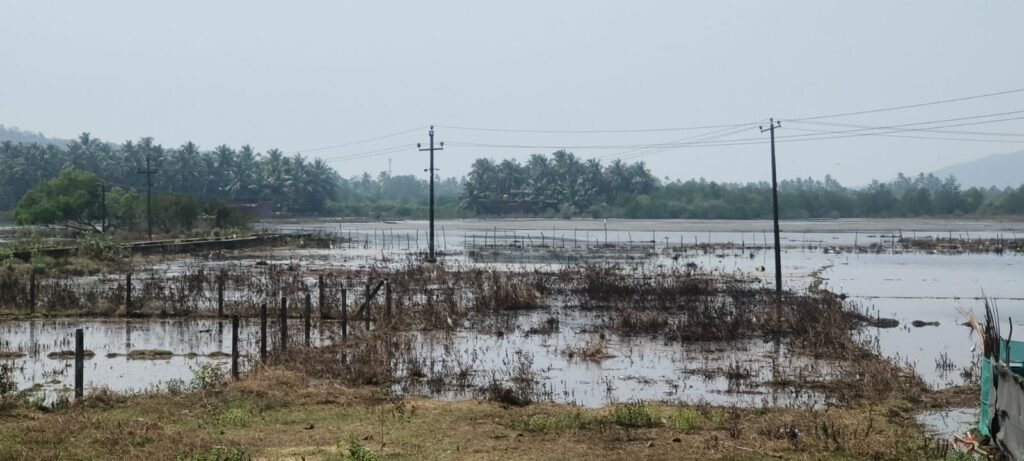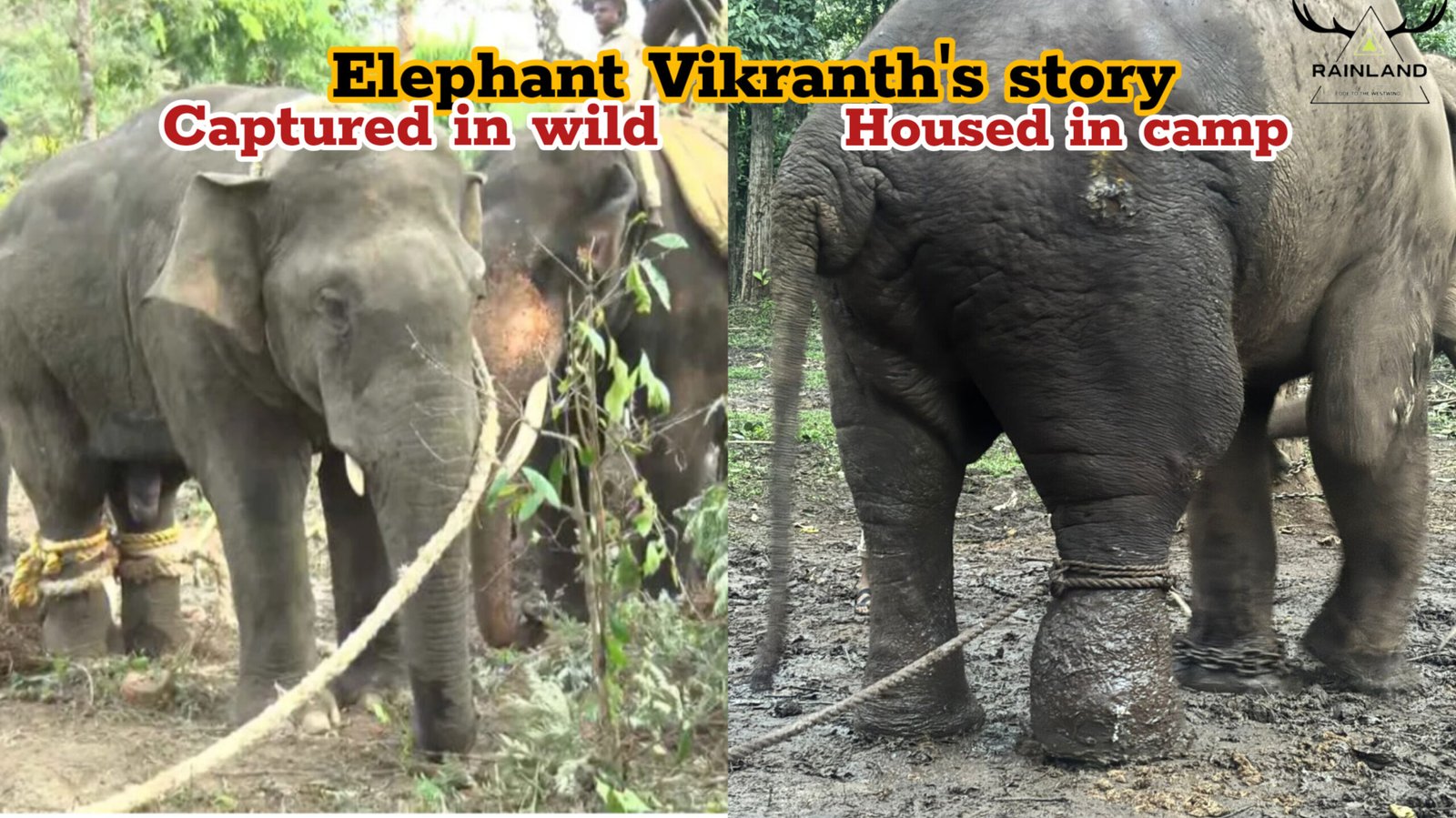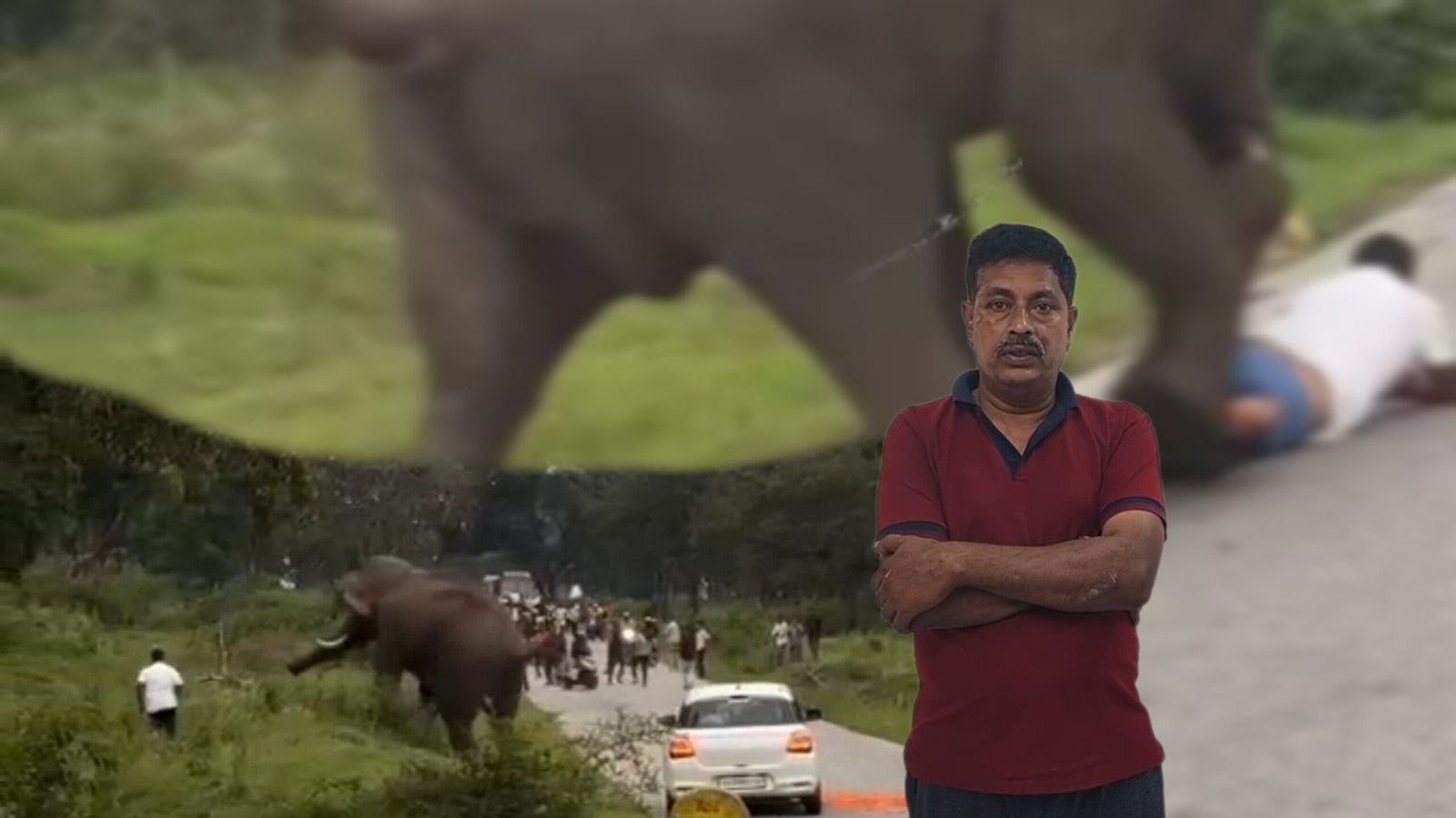Karwar, a coastal town in Uttara Kannada district, Karnataka, is facing an unprecedented crisis. The Kali River, which flows through the town, has overflowed its banks, flooding thousands of acres of agricultural land with saltwater, media reported.
The rising temperatures and high tides have caused the sea level to rise, resulting in saltwater entering the Kaali River. The river’s water level has increased, flooding the surrounding agricultural lands and causing widespread damage to crops.

“We’ve lost everything,” says a local farmer. “Our crops are ruined, and we don’t know how we’ll survive.”
The situation is dire, with thousands of acres of agricultural land affected. The local farmers, who were once self-sufficient, are now struggling to make ends meet.
According to Jagannath Rathod, a marine biologist, the flooding is a result of a natural phenomenon called “Bharat’ (high tide). “The high tide has caused the sea level to rise, resulting in saltwater entering the Kali River,” he explained.
The flooding has not only affected agricultural lands but also contaminated the groundwater. The local residents are struggling to access clean drinking water.
The authorities have visited the affected areas and are assessing the damage. “We are taking steps to mitigate the situation,” said Poornima, an official from the Minor Irrigation Department.
The flooding has affected not only Kinara village but also other coastal villages, including Chandia, Chittakula, and Amadalli. The situation is grim, with the local residents struggling to cope with the aftermath of the flooding.
This is not the first time the Kali River has flooded. However, the severity of the flooding this time has caught the local residents off guard. The situation is a wake-up call for the authorities to take measures to prevent such flooding in the future.




